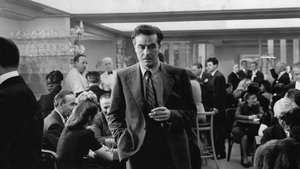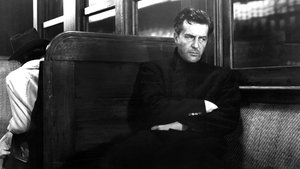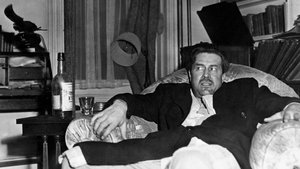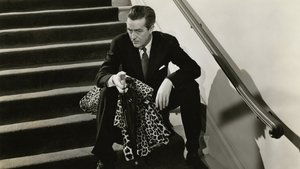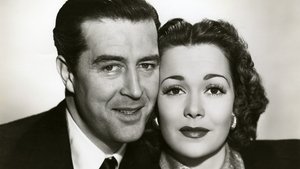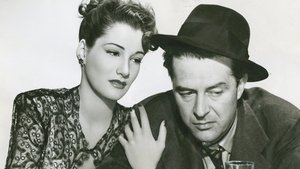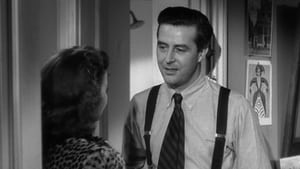Contact: [email protected]
Video Sources 0 Views
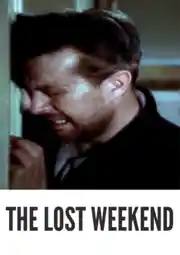
The Lost Weekend Colorized 1945: Best Heartbreaking Tale of Addiction and Redemption
Synopsis
[ez-toc]




Introduction
In the ever-evolving landscape of cinema, where CGI and cutting-edge technology dominate the silver screen, there’s a certain allure to revisiting the classics. The grainy, black-and-white frames of old movies evoke a sense of nostalgia, transporting audiences to a bygone era. Among these cinematic treasures is “The Lost Weekend Colorized,” a 1945 masterpiece directed by the legendary Billy Wilder. Now, decades later, a controversial decision has been made to colorize this black-and-white classic, raising questions about the preservation of cinematic history.
Key takeaway: In this article, we will explore the impact of colorization on the viewing experience of classic films, with a focus on the colorized version of “The Lost Weekend Colorized.” We’ll delve into the making of the film, the plot intricacies, critical acclaim, visual aesthetics, and the enduring legacy that earned it a place in the National Film Registry. Moreover, we will address the controversy surrounding the colorized version and the importance of film restoration in preserving cinematic history.
Read Media File Transfer Agreement: Terms and Conditions
Read FAQ
The Making of “The Lost Weekend Colorized”
To appreciate the colorized version, we must first understand the roots of the original film. Directed by Billy Wilder and featuring stellar performances from Ray Milland and Jane Wyman, “The Lost Weekend Colorized” emerged from the pages of Charles R. Jackson’s novel of the same name. Wilder, known for his keen storytelling and ability to tackle societal issues, took on the challenge of bringing this gripping tale of alcoholism to the screen.
The behind-the-scenes efforts, from Wilder’s directorial prowess to the intense performances of Milland and Wyman, played a crucial role in the film’s success. Understanding this foundation allows us to appreciate the leap into colorization, a decision that could breathe new life into the classic narrative.
Diving into the Dark Depths: A Plot Analysis of “The Lost Weekend Colorized”
“The Lost Weekend Colorized” unfolds a haunting narrative of a chronic alcoholic’s four-day descent into the abyss of addiction. The film unflinchingly explores the harrowing consequences of substance abuse on the individual and their relationships. The audience is taken on a journey through the protagonist’s desperate struggle, capturing the desperation and despair of addiction in a raw and unfiltered manner.
The black-and-white cinematography, marked by stark shadows and stark contrasts, adds to the film’s atmospheric portrayal of addiction. The decision to colorize such a deeply impactful narrative raises questions about whether the visual tone can be preserved or if the colorization alters the intended emotional impact.
The Lost Masterpiece: Critical Acclaim for “The Lost Weekend Colorized”
Upon its release, “The Lost Weekend Colorized” faced both acclaim and controversy. The film garnered widespread recognition, earning Academy Awards for Best Picture, Best Director, Best Actor (Ray Milland), and Best Adapted Screenplay. Additionally, the haunting score composed by Miklós Rózsa received well-deserved praise.
Over time, the film’s legacy continued to grow. It secured the Grand Prix at the Cannes Film Festival, solidifying its status as a cinematic triumph. However, the question arises: does the colorized version preserve the essence that earned “The Lost Weekend Colorized” such critical acclaim, or does it risk diluting the raw emotion that resonated with audiences?
Shades of Despair: The Visual Aesthetic of “The Lost Weekend”
One of the defining characteristics of “The Lost Weekend” lies in its visual style. The black-and-white cinematography, masterfully crafted by cinematographer John F. Seitz, contributed to the film’s brooding and atmospheric quality. The play of shadows and light intensified the emotional impact of the narrative.
As we contemplate the colorized version, we must ask whether the original visual intent can be maintained. Does the addition of color enhance the experience or risk overshadowing the deliberate choices made by the filmmakers? The debate surrounding the colorization of classic films hinges on finding a balance between technological advancement and artistic preservation.
Controversy Surrounding the Colorized Version
The introduction of colorization to classic films has always sparked controversy within the film preservation community. Some argue that it breathes new life into old favorites, making them more accessible to modern audiences. Others staunchly believe that altering the original black-and-white aesthetic disrupts the artistic vision of the filmmakers.
“The Lost Weekend Colorized 1945” stands at the center of this debate. Director Billy Wilder, in his lifetime, expressed his disapproval of colorization, firmly stating that it goes against the intentions of the original creators. As audiences grapple with the decision to embrace or resist the colorized version, Wilder’s stance adds a layer of ethical consideration to the viewing experience.
The Enduring Legacy of “The Lost Weekend Colorized”
Regardless of the ongoing debate, “The Lost Weekend Colorized” has secured its place in the National Film Registry, ensuring its preservation for future generations. The film’s legacy extends beyond the 1940s, influencing subsequent works that tackle the theme of addiction in cinema. Its enduring impact speaks to the universality of its message and the timeless quality of its storytelling.
The question now becomes whether the colorized version can seamlessly integrate into this legacy or if it stands as a separate entity. Does it serve as a gateway for new audiences to discover the brilliance of “The Lost Weekend Colorized,” or does it risk overshadowing the original black-and-white version?
Preserving Cinematic History: The Importance of Film Restoration
As we navigate the realms of colorization and preservation, it’s vital to underscore the importance of film restoration. Institutions and professionals play a crucial role in ensuring that old movies, with their unique visual and narrative qualities, are not lost to time. The process involves meticulous care, archiving, and restoration to maintain the integrity of the original creations.
This brings us to a broader discussion about the responsibility of the film industry and audiences alike. Supporting efforts in film preservation, whether through donations or raising public awareness, ensures that cinematic treasures like “The Lost Weekend” remain accessible for generations to come.
Recommending Other Must-Watch Colorized Films
For those intrigued by the concept of colorized classics, there are several films that successfully underwent the transformation without compromising their artistic integrity. Some recommendations include “Casablanca,” “Gone with the Wind,” and “It’s a Wonderful Life.” These films showcase the potential of colorization to enhance the viewing experience while respecting the original vision of the filmmakers.
Embracing the Cinematic Past: Tips for Discovering and Appreciating Old Films
Watching old films is a unique experience that requires a shift in perspective. Embracing the cinematic past involves acknowledging the technological limitations of the time while appreciating the storytelling prowess that transcends the ages. To fully engage with the charm of vintage cinema, explore various genres, delve into the works of iconic directors, and allow yourself to be transported to different eras through the lens of the past.
Conclusion
In conclusion, “The Lost Weekend Colorized 1945” stands as a testament to the ongoing debate surrounding colorization in film preservation. As we navigate the shades of despair within this classic narrative, we encourage audiences to explore both the original black-and-white version and the colorized iteration. Each offers a unique perspective, allowing viewers to form their own opinions on the impact of colorization on cinematic history.
In the ever-changing landscape of cinema, it’s crucial to balance technological advancements with a deep respect for the artistic intentions of the original creators. “The Lost Weekend” remains a beacon of storytelling brilliance, and whether viewed in its original form or through the lens of colorization, its enduring legacy is a testament to the power of cinema to transcend time.
